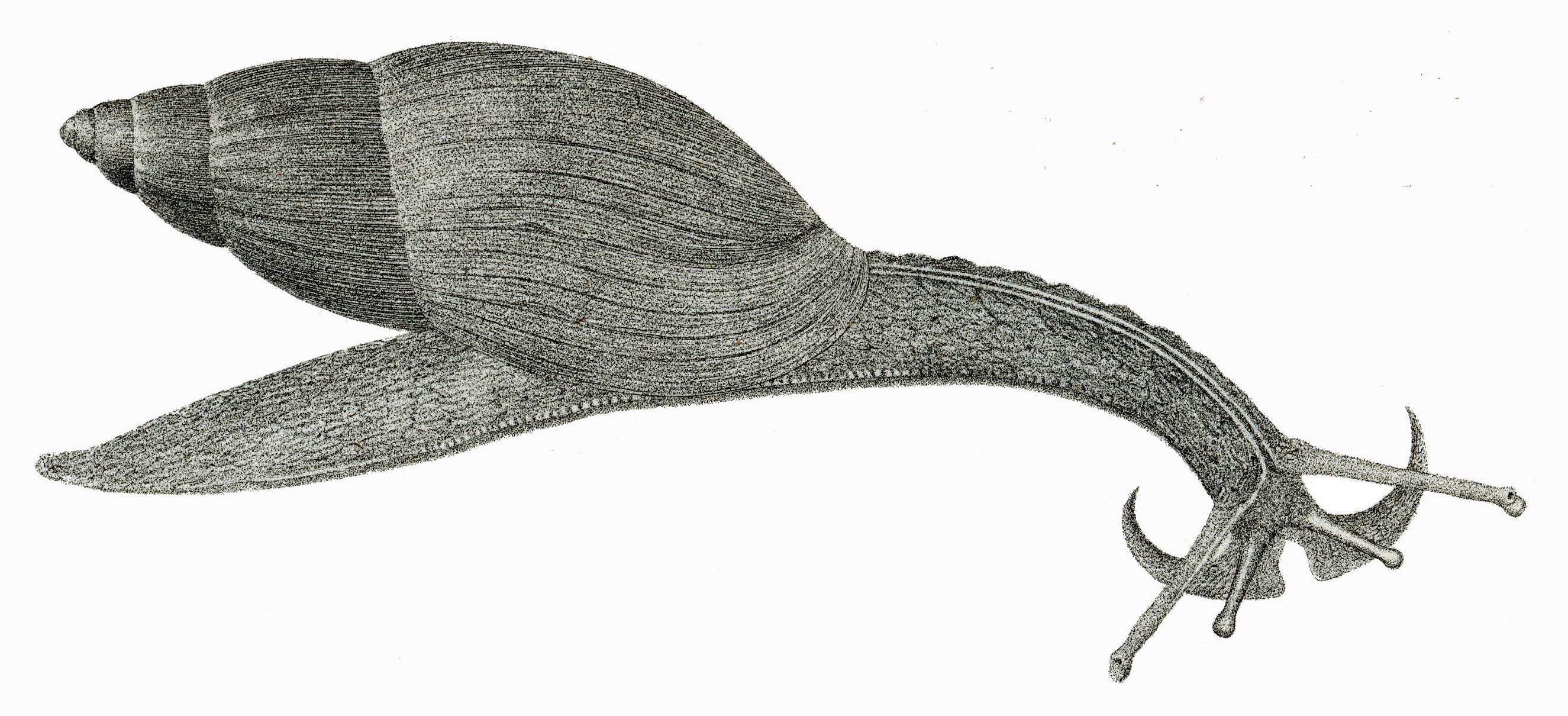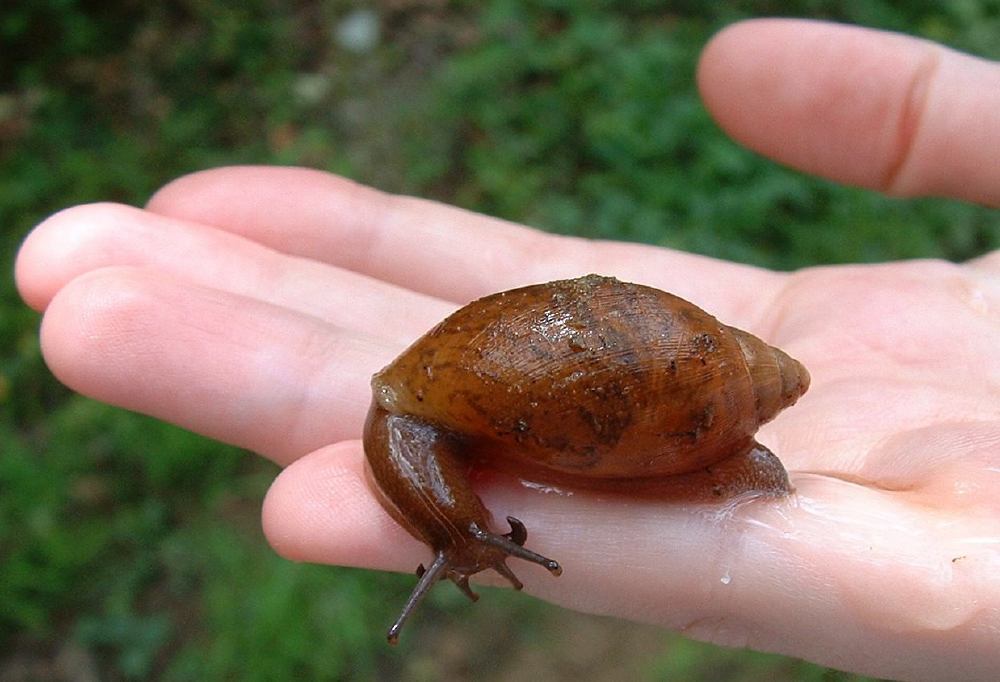|
Euglandina
''Euglandina'' is a genus of predatory medium- to large-sized, air-breathing, land snails, terrestrial pulmonate gastropod mollusks in the family Spiraxidae.PDF. These snails were previously placed in the family Oleacinidae (according to the taxonomy of the Gastropoda by Bouchet & Rocroi, 2005). ''Euglandina'' is the type genus of the subfamily Euglandininae. The pulmonate genus ''Euglandina'' is often referred to as ''Glandina'' in older literature, and the most widely known species, '' Euglandina rosea'', may commonly be found under the synonym ''Glandina truncata''. These snails are especially notable for being carnivorous and predatory. They are sometimes called "wolf snails" for that reason. Distribution The natural range of ''Euglandina'' encompasses much of the tropical and subtropical Western Hemisphere, including the Southeastern United States to Texas, Mexico, and various locations in Central and South America. The species ''E. rosea'' has been intentionally ... [...More Info...] [...Related Items...] OR: [Wikipedia] [Google] [Baidu] |
Euglandina Broctontomlini
''Euglandina'' is a genus of predatory medium- to large-sized, air-breathing, land snails, terrestrial pulmonate gastropod mollusks in the family Spiraxidae.PDF. These snails were previously placed in the family Oleacinidae (according to the taxonomy of the Gastropoda by Bouchet & Rocroi, 2005). ''Euglandina'' is the type genus of the subfamily Euglandininae. The pulmonate genus ''Euglandina'' is often referred to as ''Glandina'' in older literature, and the most widely known species, '' Euglandina rosea'', may commonly be found under the synonym ''Glandina truncata''. These snails are especially notable for being carnivorous and predatory. They are sometimes called "wolf snails" for that reason. Distribution The natural range of ''Euglandina'' encompasses much of the tropical and subtropical Western Hemisphere, including the Southeastern United States to Texas, Mexico, and various locations in Central and South America. The species ''E. rosea'' has been intentionally ... [...More Info...] [...Related Items...] OR: [Wikipedia] [Google] [Baidu] |
Euglandina Rosea
''Euglandina rosea'', the rosy wolfsnail or cannibal snail, is a species of medium-sized to large predatory air-breathing land snail, a carnivorous terrestrial pulmonate gastropod mollusk in the family Spiraxidae.MolluscaBase eds. (2020). MolluscaBase. Euglandina rosea (Férussac, 1821). Accessed through: World Register of Marine Species at: http://www.marinespecies.org/aphia.php?p=taxdetails&id=1289331 on 2020-11-09 This species is a fast and voracious predator, hunting and eating other snails and slugs.Clifford, Kavan T., Liaini Gross, Kwame Johnson, Khalil J. Martin, Nagma Shaheen, and Melissa A. Harrington. (2003)."Slime-trail Tracking in the Predatory Snail, Euglandina Rosea." Behavioral Neuroscience 117.5:1086-095. The rosy wolfsnail was introduced into Hawaii in 1955 as a biological control for the invasive African land snail, ''Lissachatina fulica''.Gerlach, Justin. (1994). “THE ECOLOGY OF THE CARNIVOROUS SNAIL EUGLANDINA ROSEA.” Diss. Wadham College, Oxford. This s ... [...More Info...] [...Related Items...] OR: [Wikipedia] [Google] [Baidu] |
Euglandina Aurata
''Euglandina aurata'' is a species of large predatory air-breathing land snail, a terrestrial pulmonate gastropod mollusk Mollusca is the second-largest phylum of invertebrate animals after the Arthropoda, the members of which are known as molluscs or mollusks (). Around 85,000 extant species of molluscs are recognized. The number of fossil species is e ... in the family Spiraxidae.Thompson F. G. (16 June 2008)"AN ANNOTATED CHECKLIST AND BIBLIOGRAPHY OF THE LAND AND FRESHWATER SNAILS OF MEXICO AND CENTRAL AMERICA". accessed 14 January 2011. ''Euglandina aurata'' is the type species of the genus ''Euglandina''. References Spiraxidae Gastropods described in 1849 {{Spiraxidae-stub ... [...More Info...] [...Related Items...] OR: [Wikipedia] [Google] [Baidu] |
Euglandina Binneyana
''Euglandina binneyana'' is a species of large predatory air-breathing land snail, a terrestrial pulmonate gastropod mollusk Mollusca is the second-largest phylum of invertebrate animals after the Arthropoda, the members of which are known as molluscs or mollusks (). Around 85,000 extant species of molluscs are recognized. The number of fossil species is e ... in the family Spiraxidae.Thompson F. G. (16 June 2008)"AN ANNOTATED CHECKLIST AND BIBLIOGRAPHY OF THE LAND AND FRESHWATER SNAILS OF MEXICO AND CENTRAL AMERICA". accessed 14 January 2011. References Spiraxidae Gastropods described in 1845 {{Spiraxidae-stub ... [...More Info...] [...Related Items...] OR: [Wikipedia] [Google] [Baidu] |
Euglandina Anomala
''Euglandina anomala'' is a species of predatory air-breathing land snail, a terrestrial pulmonate gastropod mollusk in the family Spiraxidae.Thompson F. G. (16 June 2008)"AN ANNOTATED CHECKLIST AND BIBLIOGRAPHY OF THE LAND AND FRESHWATER SNAILS OF MEXICO AND CENTRAL AMERICA". accessed 14 January 2011. Subspecies * ''Euglandina anomala barrocoloradensis'' Pilsbry Henry Augustus Pilsbry (7 December 1862 – 26 October 1957) was an American biologist, malacologist and carcinologist, among other areas of study. He was a dominant presence in many fields of invertebrate taxonomy for the better part of a centu ..., 1930 References Spiraxidae Gastropods described in 1879 {{Spiraxidae-stub ... [...More Info...] [...Related Items...] OR: [Wikipedia] [Google] [Baidu] |
Euglandina Bailyi
''Euglandina bailyi'' is a species of large predatory air-breathing land snail, a terrestrial pulmonate gastropod mollusk Mollusca is the second-largest phylum of invertebrate animals after the Arthropoda, the members of which are known as molluscs or mollusks (). Around 85,000 extant species of molluscs are recognized. The number of fossil species is e ... in the family Spiraxidae.Thompson F. G. (16 June 2008)"AN ANNOTATED CHECKLIST AND BIBLIOGRAPHY OF THE LAND AND FRESHWATER SNAILS OF MEXICO AND CENTRAL AMERICA". accessed 14 January 2011. References Spiraxidae Gastropods described in 1950 {{Spiraxidae-stub ... [...More Info...] [...Related Items...] OR: [Wikipedia] [Google] [Baidu] |
Spiraxidae
Spiraxidae is a family of predatory air-breathing land snails, terrestrial pulmonate gastropods in the superfamily Testacelloidea (according to the taxonomy of the Gastropoda by Bouchet & Rocroi, 2005). Distribution The distribution of this family is Neotropical. Taxonomy 2005 taxonomy The family Spiraxidae is classified within the informal group Sigmurethra, itself belonging to the clade Stylommatophora within the clade Eupulmonata (according to the taxonomy of the Gastropoda by Bouchet & Rocroi, 2005). The family Spiraxidae consists of the following subfamilies: * Spiraxinae H. B. Baker, 1939 * Micromeninae Schileyko, 2000 2010 taxonomy Thompson (2010)PDF. redefined subfamilies in the Spiraxidae, moving Euglandininae and Streptostylinae to become subfamilies of Spiraxidae. According to their work, there are three subfamilies within the Spiraxidae: * Spiraxinae H. B. Baker, 1939 - including ''Micromena'' * Euglandininae H. B. Baker, 1941 * Streptostylinae H. ... [...More Info...] [...Related Items...] OR: [Wikipedia] [Google] [Baidu] |
Euglandina Aurantiaca
''Pittieria aurantiaca'' is a species of predatory air-breathing land snail, a terrestrial pulmonate gastropod mollusk in the family Spiraxidae. This species was described based on only one specimen. This specimen was collected by William More Gabb (1839-1878) in Costa Rica, and the species was described under the name ''Euglandina aurantiaca'' by George French Angas in 1879, after Gabb's death. The species was subsequently moved to the genus ''Pittieria'', which was created by Eduard von Martens in 1901. This snail is carnivorous but it also eats honeydew while that substance is being produced by a species of lantern bug. A species of carpenter ant has been observed climbing onto the head of the snail in order to steal some of the honeydew while the snail is feeding in this way. Distribution The type locality of ''Pittieria aurantiaca'' was described as "from the hilly country", in Costa Rica. It is now known to occur in the following countries and areas: * Costa Ric ... [...More Info...] [...Related Items...] OR: [Wikipedia] [Google] [Baidu] |
Achatina Fulica
''Lissachatina fulica'' is a species of large land snail that belongs in the subfamily Achatininae of the family Achatinidae. It is also known as the Giant African land snail.''Achatina fulica''. Global Invasive Species Database. ISSG. IUCN. It shares the common name "giant African snail" with other species of snails such as '''' and ''''. This snail species has been considered a significant cause of pest issues around the world. Internationally, it is the most frequently occurring invasive species of snail. Outside of ... [...More Info...] [...Related Items...] OR: [Wikipedia] [Google] [Baidu] |
Mollusk
Mollusca is the second-largest phylum of invertebrate animals after the Arthropoda, the members of which are known as molluscs or mollusks (). Around 85,000 extant species of molluscs are recognized. The number of fossil species is estimated between 60,000 and 100,000 additional species. The proportion of undescribed species is very high. Many taxa remain poorly studied. Molluscs are the largest marine phylum, comprising about 23% of all the named marine organisms. Numerous molluscs also live in freshwater and terrestrial habitats. They are highly diverse, not just in size and anatomical structure, but also in behaviour and habitat. The phylum is typically divided into 7 or 8 taxonomic classes, of which two are entirely extinct. Cephalopod molluscs, such as squid, cuttlefish, and octopuses, are among the most neurologically advanced of all invertebrates—and either the giant squid or the colossal squid is the largest known invertebrate species. The gas ... [...More Info...] [...Related Items...] OR: [Wikipedia] [Google] [Baidu] |
Pulmonate
Pulmonata or pulmonates, is an informal group (previously an order, and before that a subclass) of snails and slugs characterized by the ability to breathe air, by virtue of having a pallial lung instead of a gill, or gills. The group includes many land and freshwater families, and several marine families. The taxon Pulmonata as traditionally defined was found to be polyphyletic in a molecular study per Jörger ''et al.'', dating from 2010. Pulmonata are known from the Carboniferous Period to the present. Pulmonates have a single atrium and kidney, and a concentrated, symmetrical, nervous system. The mantle cavity is located on the right side of the body, and lacks gills, instead being converted into a vascularised lung. Most species have a shell, but no operculum, although the group does also include several shell-less slugs. Pulmonates are hermaphroditic, and some groups possess love darts. Linnean taxonomy The taxonomy of this group according to the taxonomy of the Ga ... [...More Info...] [...Related Items...] OR: [Wikipedia] [Google] [Baidu] |
Land Snail
A land snail is any of the numerous species of snail that live on land, as opposed to the sea snails and freshwater snails. ''Land snail'' is the common name for terrestrial gastropod mollusks that have shells (those without shells are known as slugs). However, it is not always easy to say which species are terrestrial, because some are more or less amphibious between land and fresh water, and others are relatively amphibious between land and salt water. Land snails are a polyphyletic group comprising at least ten independent evolutionary transitions to terrestrial life (the last common ancestor of all gastropods was marine). The majority of land snails are pulmonates that have a lung and breathe air. Most of the non-pulmonate land snails belong to lineages in the Caenogastropoda, and tend to have a gill and an operculum. The largest clade of land snails is the Cyclophoroidea, with more than 7,000 species. Many of these operculate land snails live in habitats or microhabitats ... [...More Info...] [...Related Items...] OR: [Wikipedia] [Google] [Baidu] |





